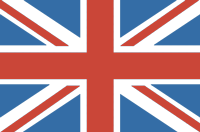A slew of reports from the US this week painted a picture of an economy that is starting to look sickly.
While the Trump administration tried to depict the 3% quarterly growth Wednesday’s GDP report revealed as proof that its policies were working, it couldn’t hide the clear signs of weakness contained in the details. The rebound was merely a cyclical rebalancing of the trade that had produced the very weak first-quarter number. Once annualised to cover the first half of the year, the economy is now growing at just over 1%. Given that the last six months of 2024 produced an annualised growth rate near 3%, this amounts to a sharp deceleration of the economy.
More troubling still, the figures for consumption, exports and investment all showed rapid weakening. That would suggest that on its current course, the economy will struggle to maintain even a 1% growth rate for the remainder of the year. Adding to the sense of misery, Thursday’s PCE price index, known to be the Fed’s preferred measure of inflation, confirmed that price pressures are starting to build as Trump’s tariffs start to kick in. Weakness in the service sector is causing disinflation, but the prices on goods are rising sharply, hitting American shoppers in their pocketbooks.
Then on Friday came the employment report, which surprised to the downside. Worse than the tepid job creation in June were the revisions to the figures for May and June, which, when added up, suggested that job creation was slowing sharply.
The one bit of good news is that the unemployment rate didn’t move much, and wages kept rising. For now, workers aren’t losing jobs and real wages remain positive. But even that silver lining has a dark cloud. Owing to the Trump administration’s immigration clampdown, which is producing tales of lawnmowers left running as ICE agents swoop down on immigrants, the job supply is growing very slowly. That makes businesses reluctant to let workers go for fear of being unable to hire them back when the good times return. But that also pressures business margins at a time their input costs are rising and sales are weakening, all of which will further impede investment.
President Trump was quick to criticise “Too Late” Jerome Powell for not cutting interest rates at this week’s Federal Reserve Board meeting. But pity the Fed, because its options aren’t clear-cut. Inflation is rising, and there are grounds to worry it will continue to worsen. Some recent research found that the already-modest share of the tariffs being absorbed by exporters has dropped to nearly nothing, leaving businesses and consumers on the hook. If the economy weakens further, businesses will probably have no choice but to suck it up, which will hit their financial health. But if the Fed stimulates the economy and demand picks back up, businesses could end up passing the costs onto consumers, driving inflation upwards.
On balance, though, the risks now favour a reduction in interest rates in the autumn, and investors are betting heavily that’s what will happen. Even then, it’s not clear that an easing of monetary policy would provide a quick restoration of the economy’s health. And if this month’s inflation report confirms that prices are indeed rising, the Fed’s headache will only get worse.
But one thing seems clear. It is time to retire the term “American exceptionalism” has come. The US is now joining the other G7 economies in the slow-growth league.










Join the discussion
Join like minded readers that support our journalism by becoming a paid subscriber
To join the discussion in the comments, become a paid subscriber.
Join like minded readers that support our journalism, read unlimited articles and enjoy other subscriber-only benefits.
Subscribe